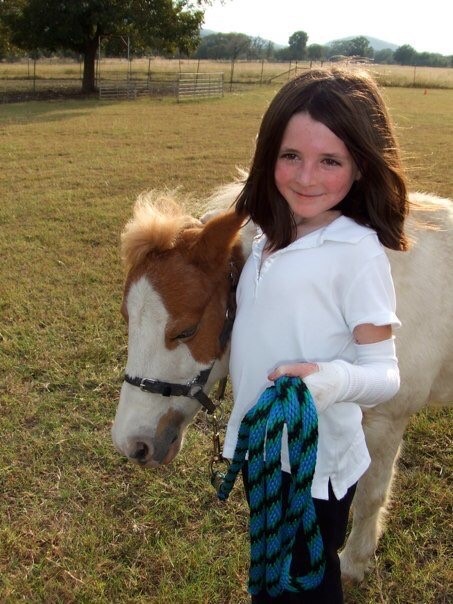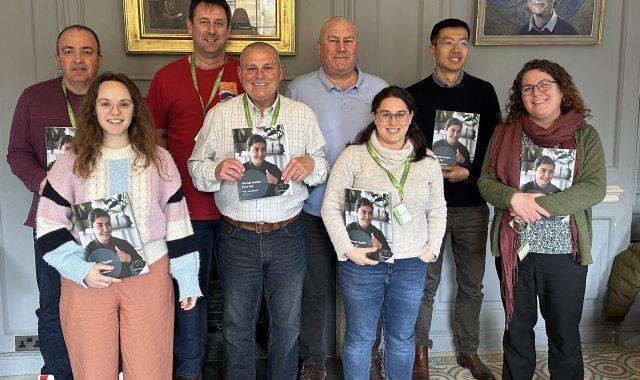The beauty of life and art
- 14 November 2022
- 6 minutes
Lucy Lott (History of Art MPhil 2022) discusses her journey to Gonville & Caius College, including her passion for medieval art and her genetic condition for which there is no cure.
A phrase attributed to Leonardo da Vinci chimes with personal experience for Lucy Lott (History of Art MPhil 2022). “If you draw something truthfully, then that's where the beauty comes from,” Leonardo said.
Lucy’s interest is in the often derided medieval art.
“Sometimes you don’t know what you're looking at straight away, but then you can uncover it,” she says. “There’s always so much more to discover. I think there's something really beautiful in being so truthful and being so open and raw about it.”
It could be a metaphor for Lucy’s life. She was born in Austin, Texas and grew up in Fredricksburg. She was one of five children in her class in a progressive school which was housed in a barn and the youngest of three children to a single mother.
She is the first from Fredricksburg to go to the University of Cambridge, or Oxford, having previously studied at the University of St Andrews and The Courtauld Institute of Art.
Those smalltown Texas beginnings are not all. She was born with recessive dystrophic epidermolysis bullosa (RDEB for short). The genetic condition results in a lack of collagen 7, the anchoding fibril between skin layers, and presents as burns, with debilitating scar tissue and skin cancer common.
“My condition is so rare you have a greater chance of being struck by lightning than being born with it,” says Lucy, whose 24th birthday is on Friday.
“There is no cure. The life expectancy can be about 18. It is degenerative in nature.
“I was lucky in that i didn't develop any lasting chronic wound areas after early childhood, whenever I was no longer learning how to crawl or playing on the playground and falling over.
“Some people, including myself, see their wounds stabilise after puberty whenever your body isn't put under such duress.”
Puberty was a particularly worrying time for Lucy. A person with EB needs to consume additional calories to support the healing process, but Lucy had trouble with her throat, first having surgery aged 12.
She had had to graduate from high school in Texas early and move to Denver to be near the specialist doctors who could treat her. The move to Colorado changed her life.
“Scar tissue doesn't stretch over time it contracts so I just couldn't swallow. I couldn’t eat. I was losing weight rapidly,” she adds.
“It got progressively worse until I was 17 and I was having surgery every three weeks. I had had those same doctors since I was two. They knew me. They saw me grow up. It was very upsetting for them to see me so sick.
“Luckily they found out my throat strictures weren’t short, they were long. They did an experimental surgery on me and it worked and I haven't had a throat surgery since I was 17.”
Following surgery, Lucy had a year’s break and with the permission of her mum applied to Sotheby’s Institute of Art where she was the youngest person enrolled in her programmes and she found an enjoyment of and aptitude for History of Art.
“I don't think I would have the strength to allow my terminally ill daughter to move countries. But she did,” Lucy says of her mum, Elizabeth, a photographer.
“Having my condition allowed me to have unique perspective to try and find beauty in not typical places. That was my skill and edge as an art historian.”
She applied to St Andrews while in London, got in, and has not lived in the United States since.
She was initially admitted in to a different Cambridge college but transferred to Caius because of the needs associated with her condition. She cannot ride a bicycle and walking distances is difficult.
“I was so beyond thrilled because I knew so much about Caius already, especially because of Stephen Hawking,” adds Lucy, who is enjoying the college experience.
“Even though we don't have the same condition I saw that he was a disabled academic and that I could also be an academic even though I was disabled. It was really humbling to be able to go to the same college that he was a fellow at. It was really amazing.”
While Stephen Hawking was a Fellow of Caius for 52 years, Lucy cannot look too far into the future.
“It's always so funny because people are like, well, what do you with your degree? Sometimes I have to say ‘I didn’t think I’d be alive this long’,” she says.
“I know that I'm very grateful and that every year is something to be grateful for. But because I am in good health and I am doing well it has empowered me to try to reach goals that I used to think were far off, like going to Cambridge. I have made it this far. My new goal is studying to earn a PhD.”
Lucy volunteers with Debra UK, a London-based charity. “They deal with everyday needs because a cure would be great, but it's not here yet,” she says.
She also works with EB Research Partnership in New York, which is seeking to find a cure. Through them she was able to interview Spiderman actor Tom Holland, while she does advocacy work, modelling and media interviews to highlight her condition.
I learned from a very young age that my body may be limited but my mind could never be
Lucy does not want to be defined by her condition and she does not think about death. She recalls as a 15-year-old wishing she had normal legs so she may wear the same clothes as other girls without being pointed at in public. Then as a 17-year-old she was told ‘you look like you've been mauled by a gorilla’. The latter episode prompted her to write in the media and she began modelling, since appearing in Vogue and Cosmopolitan.
“EB is so visual if they can see my scars people can see a glimpse of my life and maybe begin to understand,” she adds.
“People can see that sometimes being beautiful is about being truthful. And that's more important than being stereotypically beautiful.”
Reflecting on her journey thus far, Lucy says: “I wish I could tell 15 year old me crying about it. Sometimes pain can ignite change.
“I’m learning to be proud of myself, because I have done something really incredible.
“I learned from a very young age that my body may be limited but my mind could never be. My scars may be one of the first things people see when they meet me, but I hope they will remember me for my words.
“It has been surreal at times, to have gone from writing my high school essays from hospital to Gonville and Caius. But if I can do it anyone can.”




